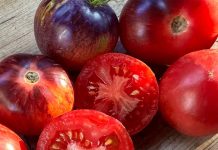The Back Bay was beautiful the other day with the Santa Ana winds blowing their warm, dry air over the water and up the cliffs where I was standing.
The planes were coming in low from over the ocean, giving everyone a nose view as they came in for their landing.
Looking around the dirt paths that line the Upper Newport Bay, it was good to see all the activity around; walkers in pairs chatting away while keeping a good pace, and runners whisking by, iPod in hand.
And all the pawed pals proudly walking their owners made the day delightful. It’s good to see people out and about, giving their bodies the exercise so needed to keep in better health for greater wealth.
Yet I wonder how many others are out there that don’t put that same kind of importance to their health.
One of the top prescribed medications is to lower blood pressure. Yet high blood pressure, also known as essential hypertension where there is no underlying disease or cause, makes up about 90 percent of all cases. Mostly lifestyle factors are to blame, including diet, lack of exercise, stress and smoking.
I understand it is so much easier to pop a pill, but as the saying goes, there is no free lunch. As much as this medication is prescribes it still comes with side effects such as cancer, blood disorders, depression, and tachycardia to name just a few.
But let me back up a bit. What is considered high blood pressure? After getting your blood pressure taken, two numbers appear: a high one and a low one. The top number or systolic pressure is measured when the heart beats and indicates the highest amount of pressure against the arterial walls.
The bottom number is the diastolic pressure and represents the heart at rest where pressure drops to its lowest level.
Also know that blood pressure varies with age and fluctuates many times during the day. It’s best to get three readings taken on different days.
A normal adult reading is at or below120/80 mm Hg. Prehypertension has a systolic reading of 120-139 mm Hg and diastolic of 80-89 mm Hg.
Stage 1 hypertension 140-159 mm Hg systolic or 90-99 mm Hg diastolic.
Stage 2 systolic is 160 mm Hg or higher and diastolic 100 mm Hg or higher.
(mm Hg is a unit of pressure equal to 0.001316 atmosphere).
What does blood pressure do to the body? The brain can suffer strokes where a weakened artery breaks and bleeds into the brain. The blood vessels in the eyes are vulnerable to high blood pressure and prone to burst or bleed and impair vision. Kidneys can get damaged over time when blood pressure narrows and thickens the blood vessels, causing less fluid to be filtered and waste buildup in the blood.
Kidney failure can ensue. And both congestive heart failure and heart attacks can be attributed to high blood pressure.
Controlling essential hypertension without medications is a choice only you can make. And if you do have hypertension, always visit a doctor. But make it a doctor that understands other strategies towards normalizing blood pressure and who will help you formalize a wellness plan to stay in health.
Healthful diets to consider are limiting saturated fats, and staying away from hydrogenated and partially hydrogenated fats. That means eliminating, margarine, shortening and refined vegetable oils and keeping animal fats to a minimum.
Sugar has been linked to hypertension. Eliminating packaged or processed foods is a giant step to getting rid of sugar in the diet. And that includes sodas.
Caffeine is not a good substance for hypertension so cut back on intake of coffee, chocolate and any thing else that is caffeinated.
Good things to add to the diet are garlic, fish oils, coenzyme Q10, calcium, magnesium and potassium. Vitamin C has a mild effect on lowering blood pressure and can help detoxify metals (a contributor to high blood pressure).
Eat your fresh vegetables. And of course, exercise. Get out and walk the beautiful city you live in to keep the blood flowing and to reduce stress.
Contact the writer at Ima_gina_tion@yahoo.com.




